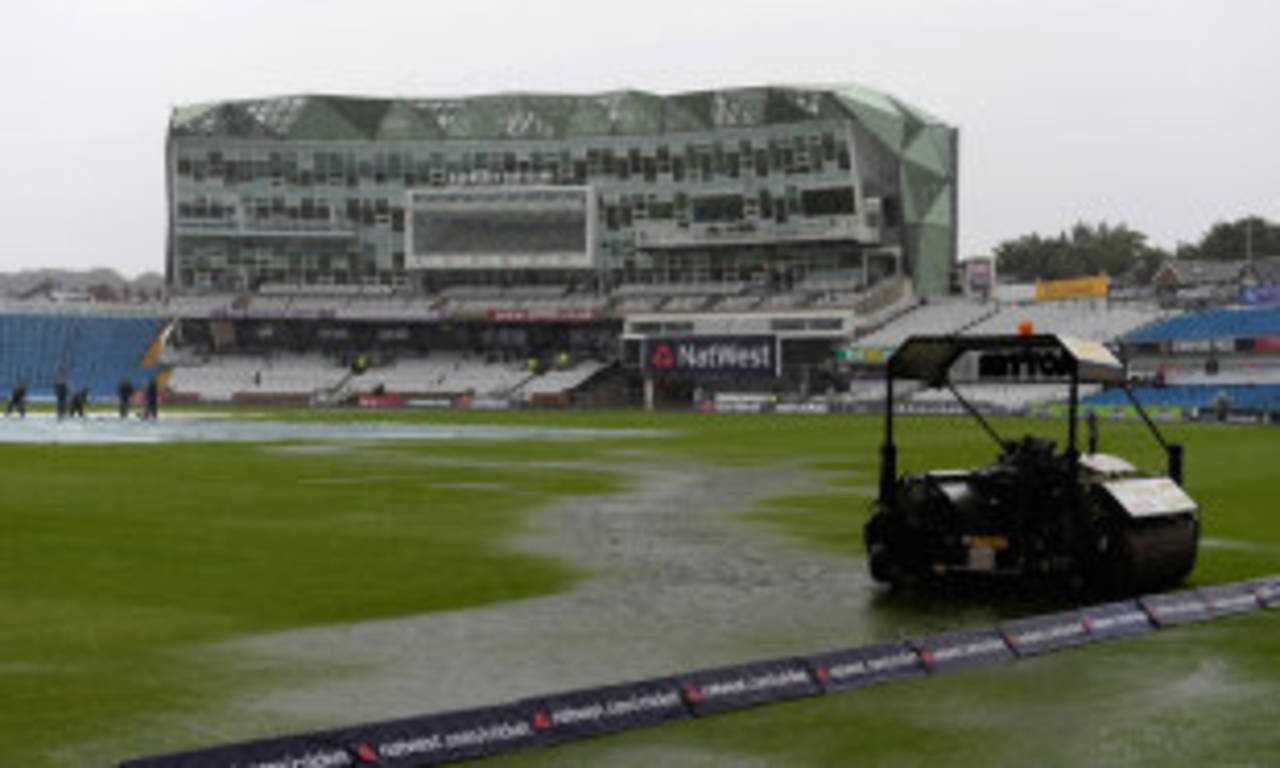Why are cricket spectators always short-changed?
We are art lovers, not watchers of some back-alley freak show
Andrew Hughes
07-Sep-2013

Headingley's Carnegie Pavilion: like a Transformer mid-morph • Getty Images
Friday's rain in Leeds was not mere meteorological happenstance, resulting from crowded isobars or cheeky northerlies; it came about because God, who I happen to know appreciates a good bit of architecture, still waxes vengeful every time he sets eyes on that monstrosity they call the Carnegie Pavilion: the architectural offspring that resulted from the coming together of an East German secret-police building and a Bond villain's underwater lair.
Similar divinely ordained retribution has been meted out across the Pennines for decades. God knew one day it would come to pass that the citizens of the red rose county would erect an enormous scarlet representation of a child's plastic construction brick right next to a lovely Victorian pavilion, and he wanted to punish them in advance with a deluge, though having promised never to do the full 40-day flood again, he has instead drizzled on them in installments for decades.
The Headingley deluge prevented cricket fans from getting a view of what is being excitingly billed as England's "experimental" one-day team, an interesting use of the word, but an apposite one, in that the cobbled-together collective due to take the field at some point this month reminds us of the kind of experiments Dr Frankenstein liked to dabble in. The whole thing sort of looks okay - bowlers and batsmen more or less in the right place - but there's something vaguely unnatural about it; it appears to be rather clumsily put together, and leaves you feeling uneasy. Particularly if you've paid £100 for your ticket.
Things did not end well for Dr Frankenstein and let us hope that this series does not conclude with Dr Flower and his minion Ashley trapped on the Rose Bowl balcony as the thunder rumbles, the lightning flashes, the wind howls, and a mob of angry peasants bearing pitchforks, torches and hastily assembled Jamie Overton banners march on the pavilion.
Our great sport is an art form, not a bit of throwaway entertainment. As CLR James said:
"Cricket is first and foremost a dramatic spectacle. It belongs with the theatre, ballet, opera and the dance."
And yet, cricket spectators are too often treated like naïve punters at some dodgy backstreet sideshow: fleeced on the way in, short-changed on the way out. If you'd paid to watch Cecilia Bartoli, you'd be a bit miffed if you turned up, ticket and opera glasses in hand, to discover that she'd been told to take a few weeks off to prepare for a more important show in Australia, and, as an experiment, Robin Thicke would be filling in.
Such is this Australian team's remarkable ability to limbo under the low-expectation bar, our Antipodean cousins may yet find a way to lose to Dr Flower's hastily assembled monstrosity, but that would hardly be the point. Australian selection policy has long been an experiment, and like the work at CERN, could take many millions of hours perusing spreadsheets, clipboards and Antiproton Decelerators to show positive results. But whilst it may be some years yet before they discover the elusive Gilchrist-Hayden-Warne particle, in the meantime, they are at least trying to play their best team.
Andrew Hughes is a writer currently based in England. He tweets here